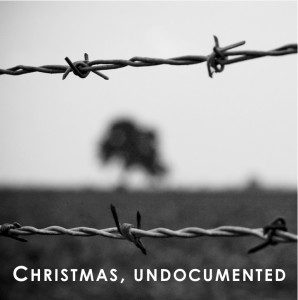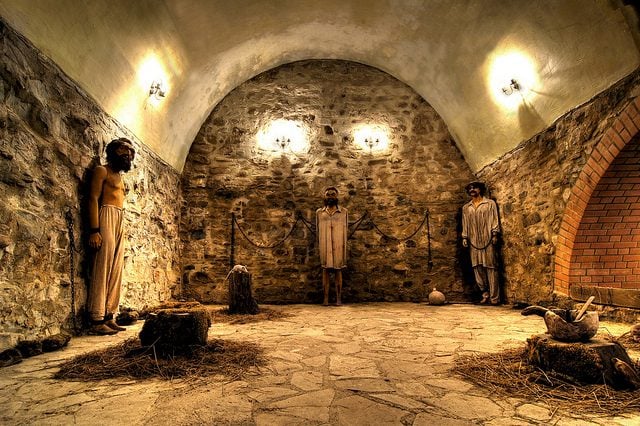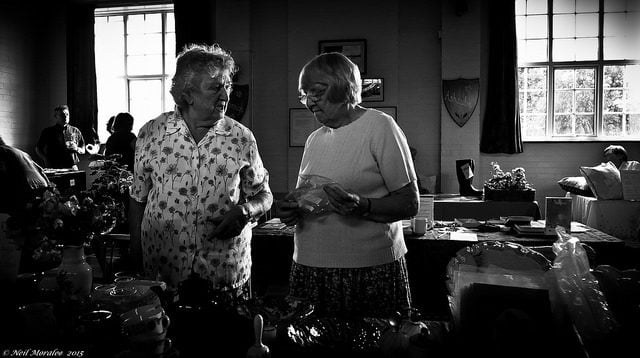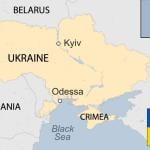
UPDATE: Part Two will be available for download Wednesday morning at 8 a.m.
This project started with a simple question: “How would Jesus be born today?” My answer to it might make you uncomfortable. It did me.
This week, to inaugurate my new blog at Patheos, I am offering an in-depth, feature-length retelling of the story of Jesus’ birth. In this re-imagined story, you will find all the familiar scenes and characters — the Annunciation with Mary and the angel, Elizabeth, the birth — but reworked, turned-upside down and placed in a jarringly modern and political context. My hope is that readers will be able to see this well-worn story anew this season and perhaps even recapture a small ember of the searing affront that was the birth of Christ (check out the end of this post for an excerpt from part one “Anunciación” or download the four-page e-chapter by clicking on the logo at the top).
See, every Christmas, Christians around the world retell the story of the birth of Jesus. Many set up illuminated lawn ornaments of Mary, Joseph and the baby Jesus. Some dust off the Nativity mantlepieces. Others, to remember the reason for the season, defend the virtues of Christmas. Then there is the yearly attempt to make the Christmas story relevant to teenagers, as demonstrated in this years offering, “A Social Network Christmas.” With all the noise and lights, it can be difficult to remember just how jarring the birth of Jesus should be to us. A few writers, like Kurt Willems and John Dominic Crossan, have reminded us of just how confrontational or unexpected it was for Jesus to be born in the way that he was.
Often, we Christians will call the birth of Jesus a humble one, when it reality it was a humiliating one. Giving birth in a barn is not quaint. It is an affront. Giving birth among the beasts is not, I would imagine, a joyful experience, but a degrading one. Giving birth as a member of an occupied nation, an oppressed people is not exactly what we think of as a history-changing event.
If Jesus were born today, it would have been undocumented and gallingly political, just as it was 2,000 years ago. He would have to be born to a minority people, an oppressed, exploited and mistreated people. He would have to be born in deprivation, in humiliation. He would have to be born in the context of kenosis, of self-emptying. Jesus would have to born in circumstances that would deprive him of his basic rights, his dignity. He would have to born in the most powerful Empire in the world, but in a way that would have been ignored by everyone who held power and important positions in our world.
This story — more midrash than fiction — is meant as my way as a writer of offering my deepest thanks to the friends, new and old, who have supported, shared and found meaning in the words I put to page. I cannot express how much your support has meant to me over the past five years on this adventure and romance with the written word. And for all you theology nerds, I hope you enjoy all the Easter eggs I have hidden in this story.
***********
Anunciación (excerpt)
The coyote, dressed only in pink bathrobe, polishes a pair of heavy-duty black work boots in her mildewed bedroom. The single incandescent bulb lighting the room dangles from a twisted wire and makes the already small room seem to shrink. Her hands begin to shake and she steadies them against the claustrophobia only by focusing on the meticulous cadence of a stiff brush scuffing over her boots’ steel toes. Few things she fears more than being confined, but every time she picks up a job, she gambles with her fears, knowing she could end up in a cinderblock cell much worse than the one she calls home. But she can’t help it. She is good at what she does, and with her pixieish figure, her long raven black hair and deep brown eyes, the border guards are rarely suspicious of her. And when they are, all it usually takes is a casual flutter of her lashes or a suggestive hand on an arm before the guards let her pass.
Still, the thought of prison sends a shiver down her bare spine, despite the desert heat. Restless, the coyote stands, allowing the bathrobe to drop to the floor in a damp heap, revealing a pair of intricate wings tattooed on her slender back. The ink begins at her shoulder blades and curves down her back to the outside of each thigh. She picks up a crumpled pack of Camel menthols from the dresser, fishes out a bent cigarette and pushes it between two chapped lips. A flame flickers to life and the cigarette glows as she pulls in the first, biting, beautiful smoke into her lungs.
She puts the cigarette to the wick of a red candle. It sputters and flares, revealing a faded icon of St. Christopher propped against the wall behind the candle. The image is of a bearded man, walking staff in his hand, a child on his back, traveling. It has always brought her comfort. She replaces the menthol to her lips, sucks and closes her eyes. She has made the trip across the border between Mexico and the United States hundreds of times, and her prayer never changes: that this trip would be no different than the last one, wholly uneventful.
The coyote opens her eyes, exhales the smoke, and embraces the urgency creeping through her body. …
To read the rest, please download the rest of Part 1, a four-page e-chapter of Christmas Undocumented, click here or the logo above.











